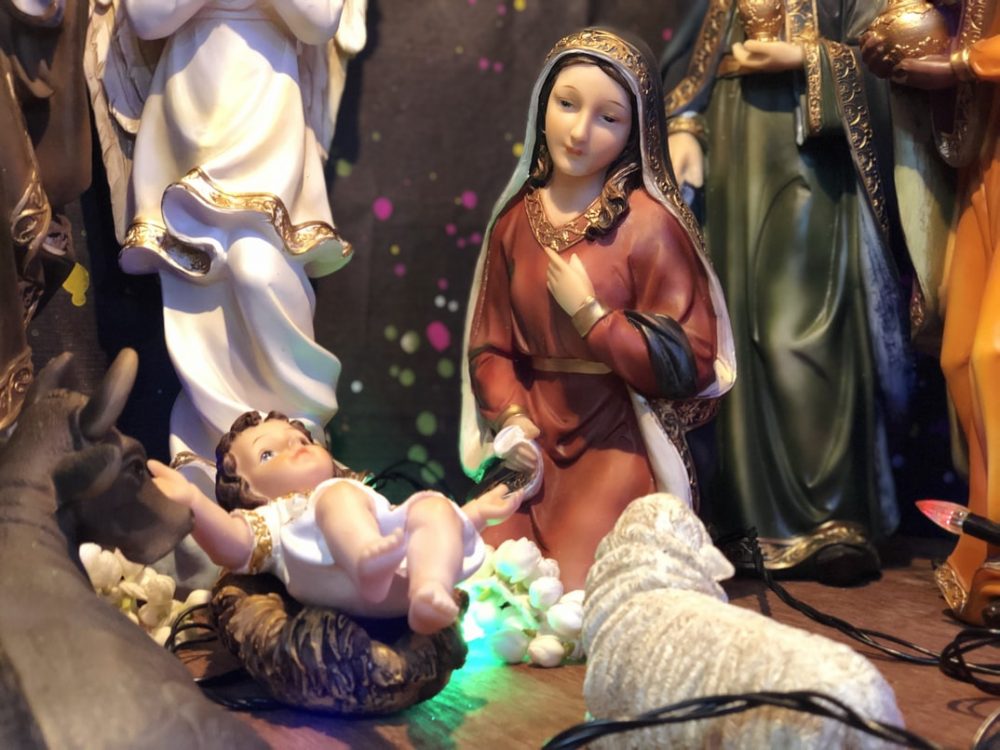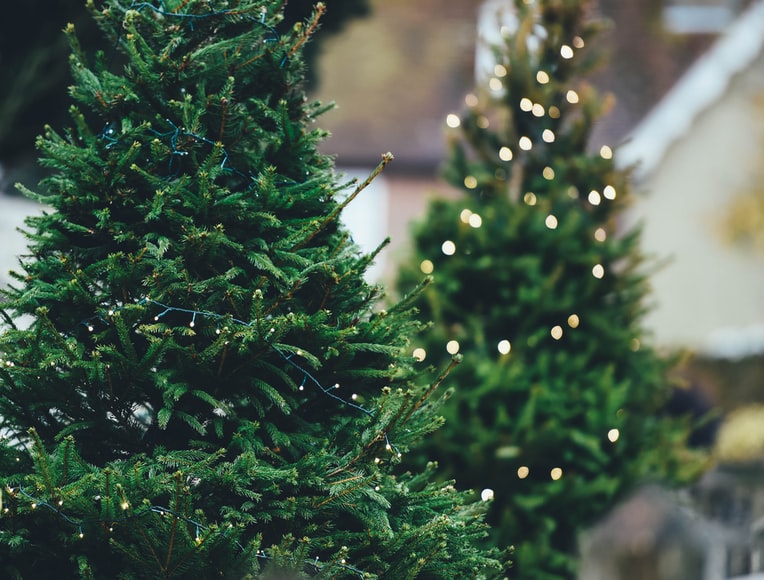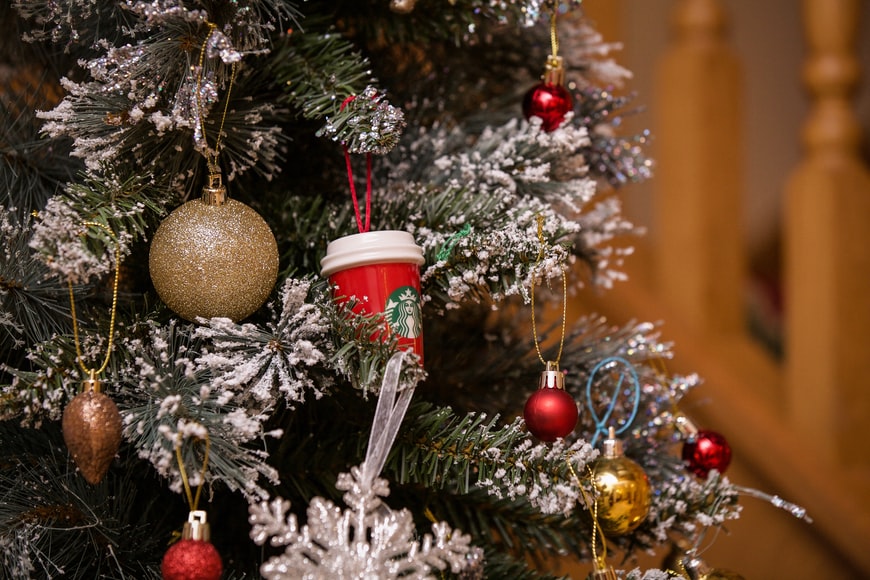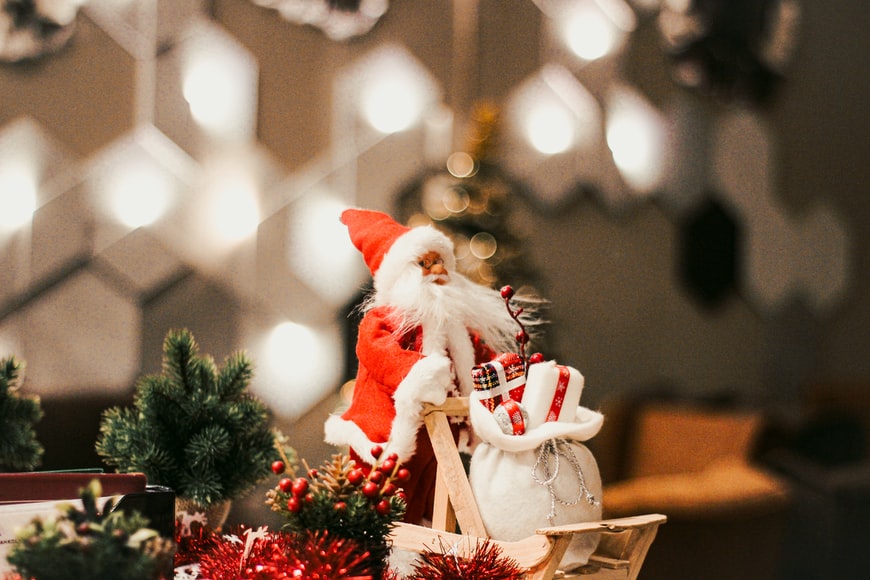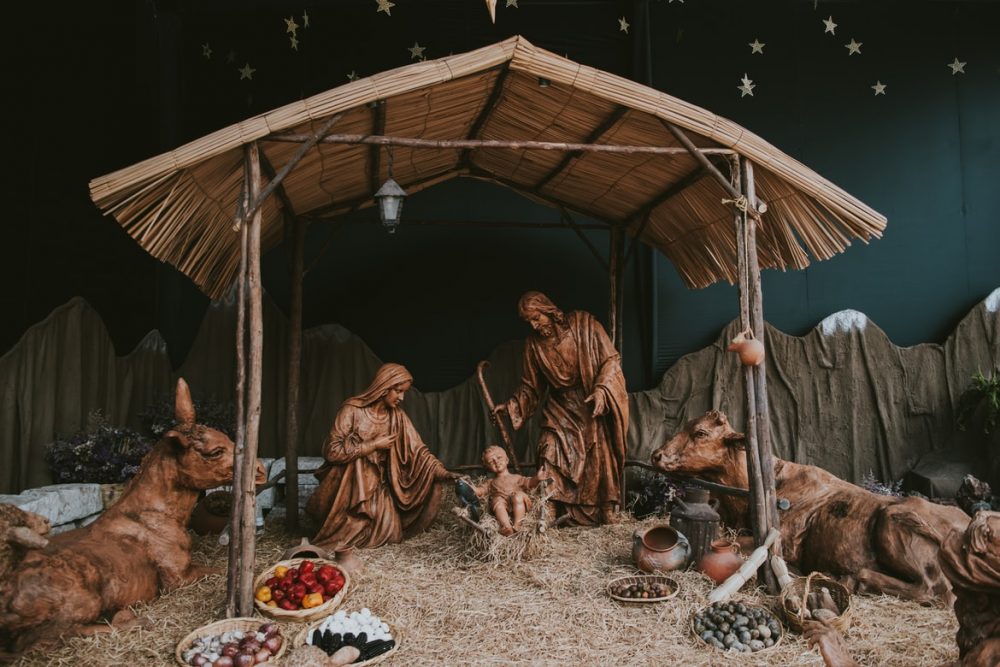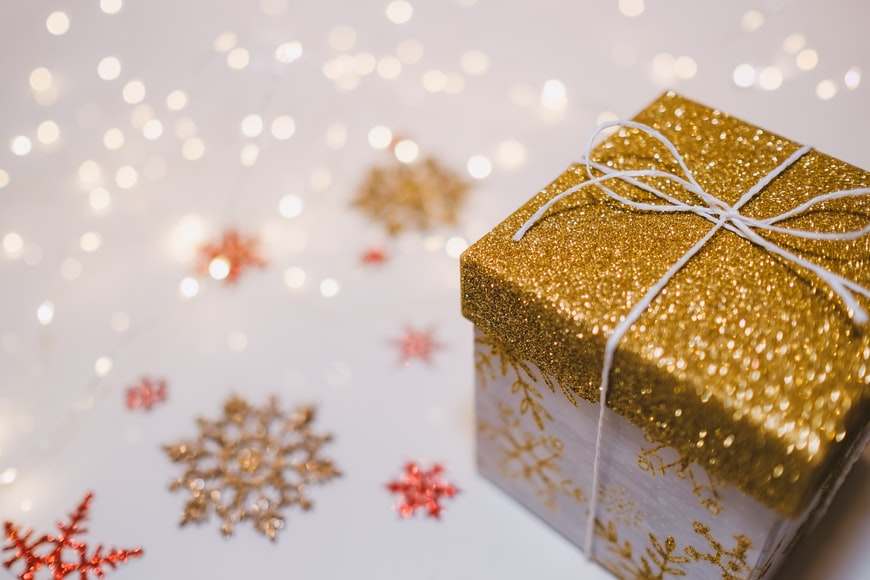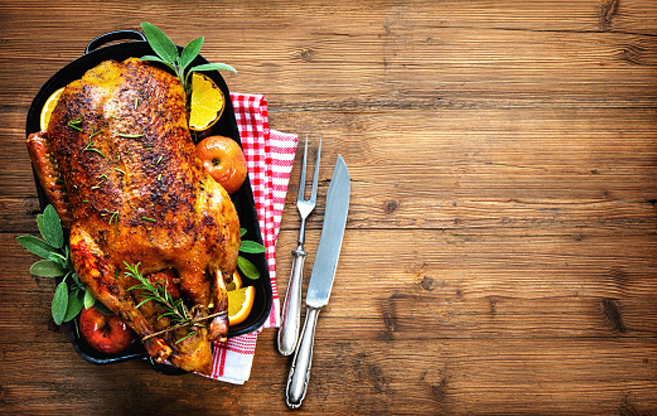History and Traditions of Christmas Explained
The origin of the "Feast of Love" and Christmas customs
Discover the history, customs, and origins of Christmas tradition, from its religious significance to the evolution of traditions like Christmas trees and Santa Claus.
Almost everyone in the world knows Christmas, which is also known as the “festival of love”. Many people like the Advent season because it creates a little coziness in the cold season – you go to the Christmas market together, light candles, children make stars, and bake cookies.
Christmas is a very special festival for many, which is celebrated together with the family. And not to forget the gifts, which the children are especially happy to receive. But why do we celebrate Christmas at all – and has the festival always been celebrated like it is today?
What about the different Christmas Customs?
Christmas is the festival on which nearly two billion Christians annually celebrate the birth of Jesus Christ. In Christianity, Christmas is one of the most important holidays of the year. According to Christian belief, Jesus is the Son of God – he was chosen to redeem people from their sins.
This is why his followers also called him Christ, which means something like the anointed one or the redeemer. With Christmas one also celebrates the “incarnation of God“ in Jesus.
It is commonly said that Jesus was born on December 25th. But if you look at the Gospels in the Bible, you won’t find this date written anywhere. The exact date of birth of Jesus Christ is unknown, but the Church later set it to be December 25th. But why in December of all times? Then it’s dark and cold here, it’s an uncomfortable month and many people don’t like the cold season.
Read Also:
Funny Christmas Wishes: Over 30 Poems & Saying
Without light nothing can grow and flourish, no life can arise. From the end of December, however, the days are slowly getting longer and the nights are getting shorter.
In all cultures, be it Persians, Romans, Celts, or Germanic peoples, the solstice was celebrated. On December 25th, it was celebrated that the day took control of the night again. Today is December 21st, this time shift came about through a reform of the calendar system in the 16th century.
The Romans also had a sun god whose day of honor fell on December 25th. Seen in this way, the god Sol was a kind of “competitor” to Christ. Christians wanted to celebrate the birth of Jesus as a public holiday and ended up setting December 25th as that day. Sol Invictus, as the sun god was called, was replaced with it.
The church chose this day not only because of the competition but also because Jesus was seen as the Bringer of Light and Savior. He is said to have said once: “I am the light of the world.” But there is an even simpler explanation for this date: on March 25th, the birth of her son is said to have been announced to the Virgin Mary by the angel Gabriel. So if Jesus was born exactly nine months later, his birth date would be December 25th.
Fire Trees as a Symbol of Life
Many people celebrate Christmas today even though they do not believe in Christianity. The Advent and Christmas customs have Christian roots, but for quite a few people in Western countries, Christmas is now more of a cultural than a religious festival. Some also criticize the fact that the original Christian family celebration has become more and more a “consumer festival”, with the Christmas business and gifts in the foreground.
Many people decorate a tree at Christmas – the decoration can be different depending on your taste. Most people buy a Christmas fir in the store for this purpose. A rather sad fate awaits most Christmas trees because, after a maximum of two weeks, their remains are thrown in the garbage.
From the point of view of environmental protection, it is advisable to at least pay attention to ecological cultivation when buying. It is even better to buy a small fir in a pot and plant it out later. More and more environmentally conscious people are also using alternatives to trees such as decorated fir branches, house plants, or a reusable tree substitute – for example, made of wood.
But what does the tree decoration have to do with Christmas anyway? Most of the people didn’t know Christmas yet, instead, they celebrated the solstice. On the shortest day of the year, they burned pieces of wood and wooden wheels that were important to them.
They then scattered the ashes on the fields and in the stables. The aim was to make the fields fertile and protect animals and people from diseases. Trees, especially conifers, which are always green, were then considered a symbol of life. Because even in winter, when no more plants bloom, the needles of these trees are green.
Branches became decorated Christmas Trees
In ancient Rome, too, branches and wreaths of conifers were given to each other on special occasions. They should bring protection and happiness. Gradually Christianity expanded and the trees were more and more associated with the tree of life from paradise.
The tree was considered a symbol of eternal life. At first, they only adopted the custom of the ancient Romans of attaching branches of conifers to houses to protect themselves from harm.
Since the middle of the 14th century, more and more branches have been collected, and finally, it became widespread to fetch an entire tree from the forest. To make it more festive, people began to decorate the tree. As early as 1419, journeyman bakers are said to have hung fruit, gingerbread, and nuts on a tree in Freiburg im Breisgau.
At first, the tree was outside the door or in a square, it was only brought into the living room around 1800. At first, the tree was hanging upside down from the ceiling – so you just hung the tree, like the branches before.
Of course, the development was not right for all Christians, because it was a pagan, i.e. non-Christian, custom. Martin Luther, however, campaigned for the Christmas tree – it was through him that the Christmas tree became famous throughout Germany. The rest of Europe soon made their acquaintance with the Christmas tree – in 1840 the English Queen Victoria had the first Christmas tree decorated in England.
More in History
30 years later the conifer came into fashion in France. With the European emigrants, the conifer came to North America and was also increasingly an integral part of Christmas outside of Europe. Soon after, he was known all over the world.
In the beginning, everything you had on hand was used as a Christmas tree ornament. In Switzerland, for example, it was first decorated with apples and cheese. Around 1650 the princes decorated their trees with dolls, clothes, and even silver jewelry.
The people, of course, could not afford to use silver jewelry or dolls as decorations, so people began to design and make their jewelry. With the advent of industrialization in the 19th century, Christmas tree decorations were also made and sold. And finally, the Christmas treetop was designed at the end of the 19th century.
Santa Claus, Nicholas, and Christ Child
Of course, Christmas also includes Santa Claus and the Christ Child – they are now an integral part of the festival. They don’t have a long tradition to look back on. The Christ Child as a girl with a white dress and veil probably goes back to Martin Luther – it was supposed to bring the presents instead of Saint Nicholas.
The figure of Santa Claus is much younger – he is mentioned for the first time in 1835 in the song “Tomorrow Comes to Santa Claus” by Hoffmann von Fallersleben. Our image of Santa Claus today is largely shaped by the USA.
The term “Christmas” is made up of two parts of the word, namely “Christmas” and “Nights”. The first word can be derived from the Germanic “wiha” and means holy. And nights can be derived from nights, so these are the holy nights.
The term has its origin in paganism and a connection to the Rauhnächten can be recognized. These are the twelve nights from December 24th, during which people were to be protected from the darkness with rituals and masses by the priests and druids.
Christmas Cribs and Pyramids
At Christmas, many people also set up a crib. Christmas nativity scenes depict the birth of Jesus and various scenes from his life. The first nativity scene was set up in 1562 and the nativity scene soon established itself as a fixed Christmas tradition. Today the Neapolitan nativity scenes are the most famous and elaborate in the world.
Before the Christmas tree became a symbol of Christmas, it was first of all the nativity scene. Today the nativity scene is sometimes set up in the Advent season and many figures are already placed, but the Christ Child is only shown in the manger on December 24th. In addition to Mary, Joseph, and Jesus, the three wise men and animals such as an ox and a donkey are often depicted.
The Christmas Pyramid probably developed out of the Dresden Pyramid. The Dresden variant consists of four sticks that are wrapped in paper. In the Erzgebirge, they took this pyramid as a model and then carved Christmas pyramids. Various everyday situations and Christmas scenes are shown on the floors. At the top of the pyramid is an impeller that begins to turn due to the rising heat of the candles.
Well-known and Unusual Christmas Customs
On Christmas Eve, i.e. December 24th, the Christmas gifts in many families take place in the late afternoon or early evening. The children are then called in and are allowed to unwrap the presents under the tree. Afterward, people eat and at night many families go to midnight mass together, which is often called Christmas mass.
As the name suggests, it begins at midnight. But that was not always the case, in the 17th and 18th centuries, it usually took place on the morning of Christmas Day. Even today there are still regions where the fair is held in the morning. Depending on the time, a gospel is recited during mass – at night the message of the birth of Jesus, and in the morning, at the shepherd’s mass, the appearance of the angels before the shepherds are told.
Another Christmas custom is the singing of Christmas carols. You are sure to know one or the other Christmas carol. Many families make music and sing on Christmas Eve and Boxing Day. The song “Silent Night, Holy Night” is said to be the most famous Christmas carol in the world. It has been translated into more than 300 languages and dialects.
A rather uncommon custom is telling scary stories. Especially in northern Germany, people pass the time before being presented with creepy stories. For example, one tells the story of the man with his head under his arm. Another unusual custom is the Christmas cucumber, which found its way to us from the USA.
It can be bought as a tree ornament in the shop and is secretly hung on the Christmas tree before the presents are given. Whoever finds the Christmas cucumber on the tree first will receive an additional gift. Finding the cucumber is not that easy as it is just as green as the tree. How this Christmas tradition came about is not clear. In the USA it is often said that it is a German custom – but no roots have yet been found here.
The Christmas Feast
Of course, there is always a festive dinner at Christmas. In some areas, it is already served on Christmas Eve. Often there is a Christmas goose or a carp. The Christmas tradition of the goose is related to St. Martin’s goose. Because with the goose of Saint Martin, a period of Lent begins, which ends with the Christmas goose.
In the Middle Ages, the Christmas tradition feast was still the Mettenmahl or the Mettensau. It was roast pork that was eaten on December 25th after the fair. December 24th was a day of fasting and therefore “only” one carp was eaten on that day. In the Middle Ages, however, many poor people could not afford such a feast. They usually had bread or vegetables with blood or liver sausage.
Some people still serve the December 25th feast today. On Christmas Eve, they often have less elaborate meals such as sausages with potato salad or, increasingly, vegetarian dishes without meat.
More and more people are also rejecting the Christmas goose because millions of geese are slaughtered at Christmas in particular and these mostly come from factory farming and are kept and killed in agony. If you don’t want to do without your roast goose, it is advisable to buy at least one organic goose.
